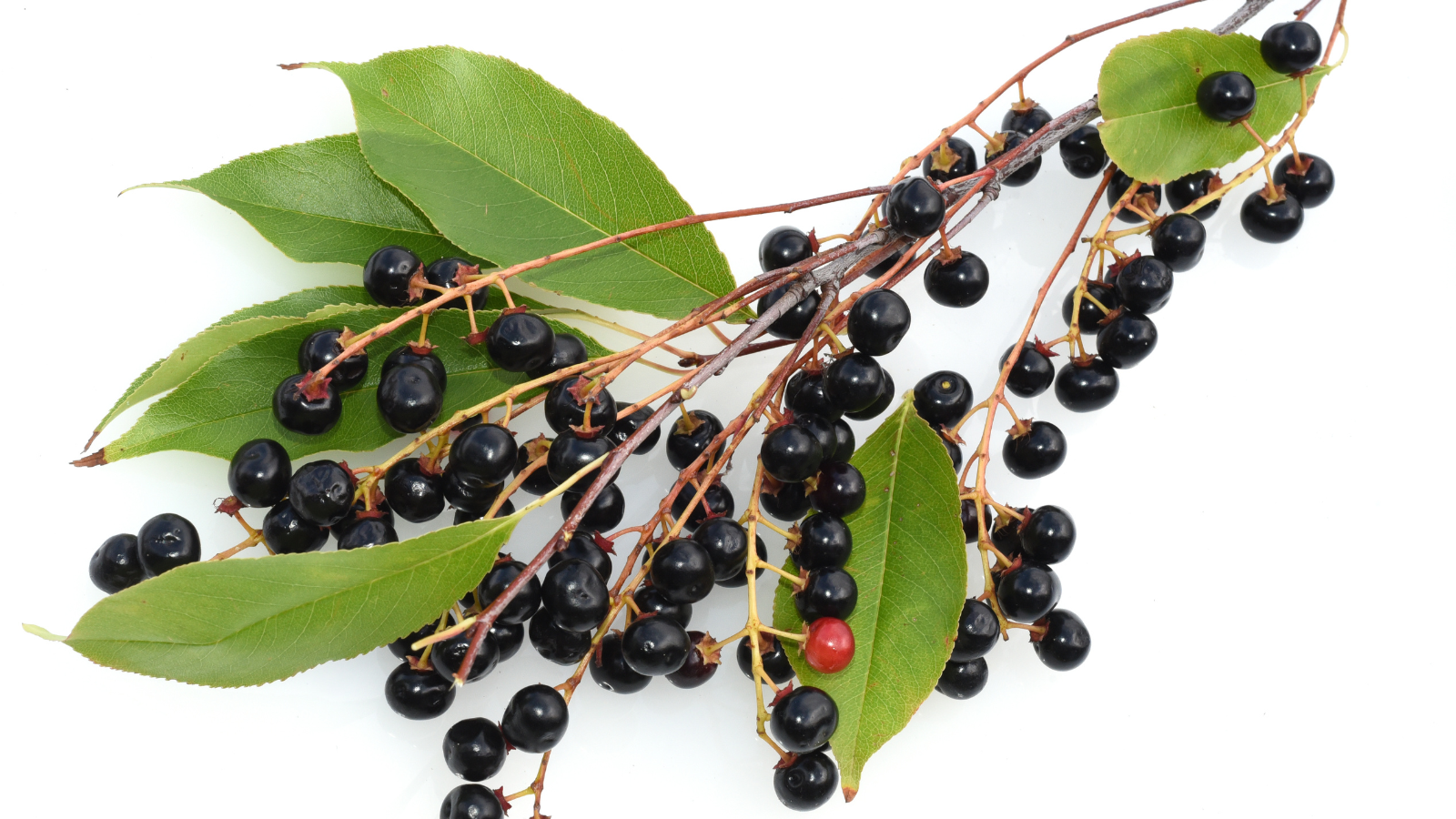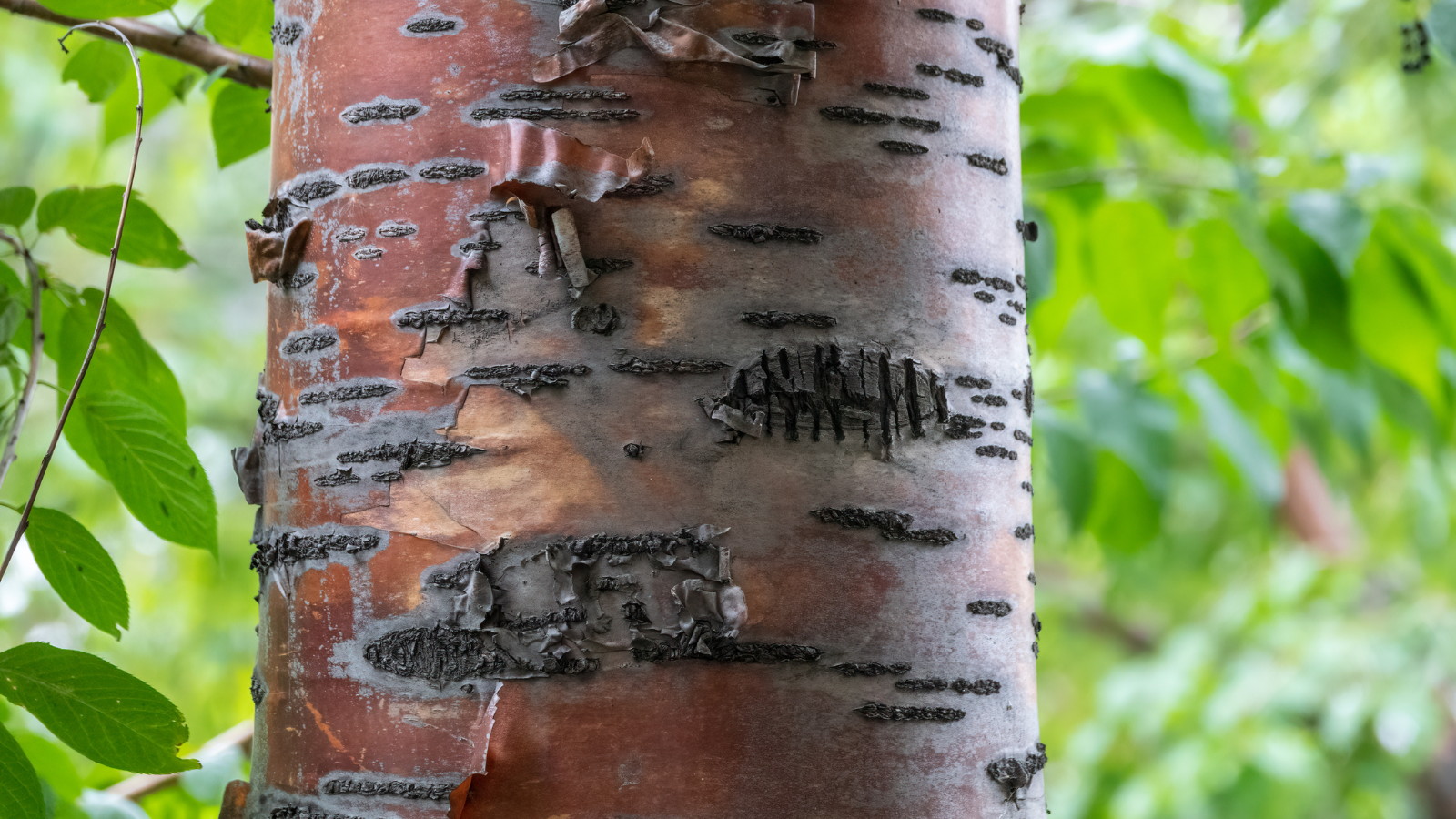Bird Cherry
(Prunus padus)
The bird cherry is a magnificent tree, enhancing our landscapes with its beauty and providing essential support for surrounding wildlife. From its nectar-rich flowers to its nutritious fruits, this tree demonstrates the interconnectedness of nature and the importance of preserving our natural habitats. This tree plays a crucial role in combating climate change, whilst fostering wildlife and increasing biodiversity.
Scientific Name: Prunus padus
Family: Rosaceae
Average Height: Can grow up to 8-15 metres tall
Average Canopy spread: The canopy of this tree tends to spread out over an area of approximately 5-8 metres.
Preferred Ground Conditions/Habitat: Bird cherry thrives in moist and well-drained soils, often found in woodland edges, hedgerows and along riversides throughout the UK. It prefers acidic or neutral soil pH levels.
How to Identify Bird Cherry
Bird Cherry Leaf ID: The leaves of bird cherry are oval-shaped with finely toothed margins. They are light green when young turning to dark green, measuring around 5-10 centimetres in length. In autumn, they transform into stunning shades of yellow, orange and red.


Bird Cherry Flowers ID: In early to mid-spring, bird cherry adorns itself with elegant clusters of fragrant white flowers with a distinct almond scent. Each flower measures around 1.5-2.5 centimetres in diameter and consists of five petals.
Bird Cherry Fruit ID: As the seasons progress, the tree develops small, dark red to black cherries that are approximately 6-8 millimetres in diameter. These fruits provide a valuable food source for a variety of bird species, but are bitter to human taste with poisonous stones.


Bird Cherry Bark ID: The bark of bird cherry starts off with a smooth, greyish-brown appearance. Over time, it develops narrow vertical fissures and turns darker, becoming rougher in texture.
What Native UK Wildlife Does Bird Cherry Support and How Does It Support Them?
The bird cherry tree attracts an array of UK native wildlife, acting as a vital resource for their survival. The flowers serve as a nectar source for numerous pollinators, including bees, butterflies and hoverflies. The ripe cherries are eagerly consumed by birds, such as blackbirds, thrushes and warblers, which play an essential role in the trees seed dispersal. Additionally, the tree's dense foliage provides nesting sites and shelter for various bird species, contributing to their breeding success.
Properties and Uses of Wood/Parts of Bird Cherry
The wood of bird cherry is moderately hard and durable, making it suitable for woodworking projects such as furniture, tool handles and turnery. The bark contains tannins and has been used traditionally for dyeing textiles. It has also found use as a natural pesticide. Medicinally, certain parts of the plant, including the bark and leaves, have been used to make herbal remedies for ailments such as colds and coughs, although it is important to consult a qualified practitioner before using any herbal treatments.
Start your tree planting journey today. Join I Dig Trees and be a part of something truly special.
Together, we’re taking positive action - planting millions of trees for climate, wildlife and communities.
